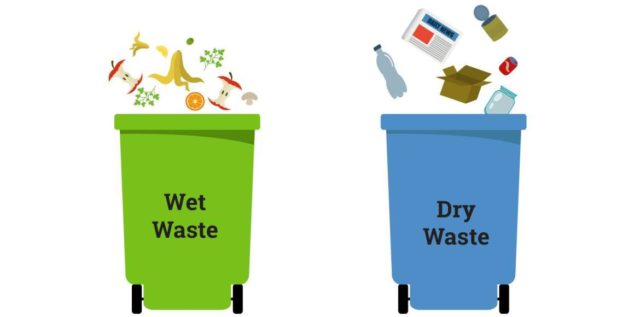If waste is not separated properly, it all gets mixed up in landfills. Waste segregation basically means keeping wet and dry wastes separately so that dry can be recycled and wet waste can be composted.
With rapid urbanisation, the country is facing massive waste management challenge. Over 377 million urban people live in 7,935 towns and cities and generate 62 million tonnes of municipal solid waste per annum, according to eco publication, Down to Earth. Only 43 million tonnes (MT) of the waste is collected, 11.9 MT is treated and 31 MT is dumped in landfill sites.
Good for the pickers
Segregation protects health. When waste pickers put their hands into the waste to clean it up, it results in cuts that further lead to infections, resulting in deterioration of a waste picker’s health. It becomes our responsibility to help these waste pickers by carefully segregating the waste that is generated in our homes.
Good for the planet
Waste segregation is included in law because it is much easier to recycle. Effective segregation of wastes means that less waste goes to landfill which makes it cheaper and better for people and the environment.
It is also important to segregate for public health. In particular, hazardous wastes can cause long term health problems, so it is very important that they are disposed of correctly and safely and not mixed in with the normal waste coming out of your home or office.
What you can do at home
- Start segregating waste in your own house now. Segregation is one of the easiest practices to follow.
- Keep separate containers for dry and wet waste in the kitchen
- Keep two bags for dry waste collection – paper and plastic, for the rest of the household waste
- Keep plastic from the kitchen clean and dry and drop into the dry waste bin.
- Send wet waste out of the home daily.
- Keep a paper bag for throwing sanitary napkins
Waste management in the apartment complex
- Form a group of like-minded people
- Explain waste segregation to your family / neighbours in your apartment building.
- Get the staff in the apartment building to understand how it works
- Get separate storage drums for storing the dry waste and wet waste
- Have the dry waste picked up by the municipal Dry waste collection centre or your local scrap dealer.
KNOW YOUR WASTE
Bio-Degradable Waste
- Vegetable
- Fruit
- Flowers
- Leaves from garden
- Wood shavings, pencil shavings
-
Non-Bio Degradable Waste
- Plastics
- Paper
- Glass
- Metal
- Frooti , and other tetrapaks
- Dusting cloth
- Aluminium foil
Article Credit: CSR Journal

